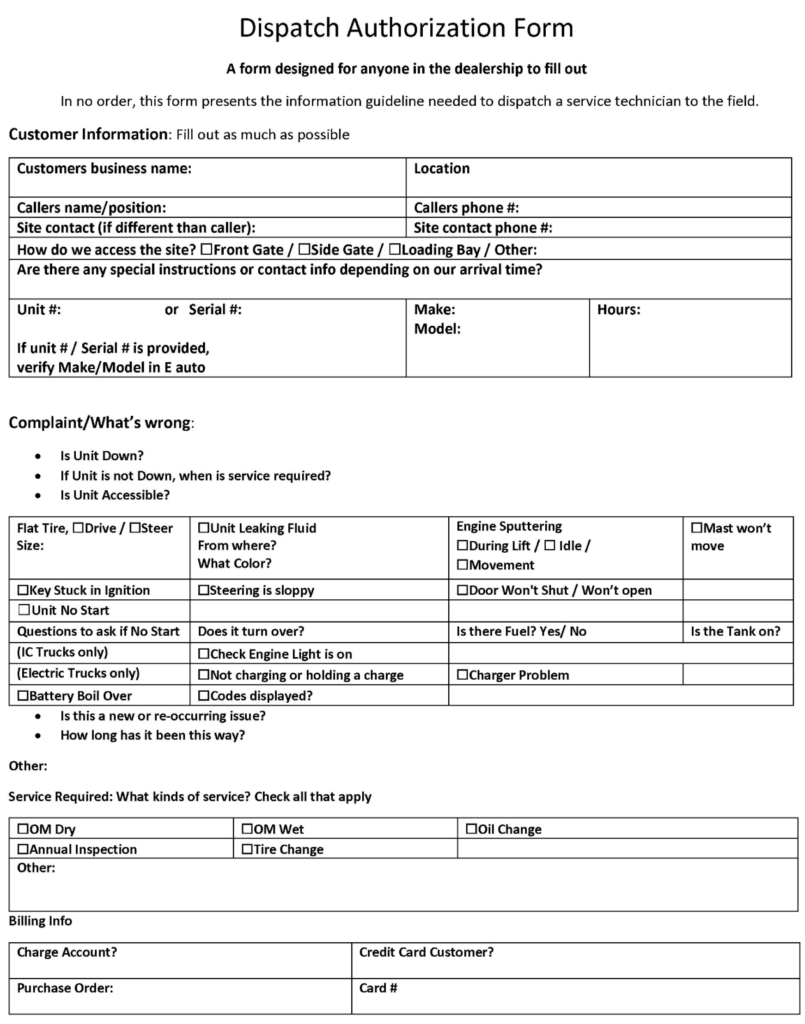One of the most frustrating and costly problems in a machinery dealership is multiple visits to a field service account before the problem is fixed. The technician drives 2.25 hours to the site, finds that he doesn’t have the right part(s), so he drives 2.25 hours back to the dealership, hopefully gets the right part(s) and repeats the process.
The customer is furious. They will probably raise loud objections to paying twice (or three times!) for technician travel. His unit productivity is down for an extended period. IF this unit is on a construction job site, the down time is costing the end user big bucks.
For the dealer, the financial recovery of any customer billing for this job is totally washed by the costs incurred for the technician’s time and vehicle wear and tear.
So, what is the preventive strategy? This is an important problem that we have dealt with in my dealer management workshops for several years.
Here are the top solutions developed and recommended by the highly experienced, very successful machinery dealer service managers.
- Organize field service technicians by geographic territories. This helps them get better acquainted with customers, build familiarity with fleet issues and establish rapport with customer contacts on the job.
- Maintain parts inventory control of each field service vehicle as a dealer branch operation. This includes cycle counting and disciplined check-in and check-out of parts.
- Conduct a discussion workshop with all technicians, supervisors, and managers. Organize them into teams of 3 or 4. Ask the teams to discuss the problem of having to make multiple field trips to fix the same machine failure. The discussion question is “What five things can we do to help achieve first trip job completion?” Give the teams at least 20 minutes to discuss the question. Then, ask each team to report. Make sure each team has a pad of paper and pen. Collect responses then sponsor a pizza supper. Make a bid deal about contributions from the service team, especially in your company newsletter and website news bulletins.
- Many smaller dealers do not have a backup for the service dispatcher at lunch. So, when a customer calls in for a repair order, often faulty, inadequate or misleading information is provided to the technician who is challenged to “get there as soon as you can.” So, he dashes blindly to the account, not knowing exactly what to expect and most likely without the right parts or even the appropriate tools. The solution, according to my advanced service management students is the following Dispatch Authorization Form.
Pads of this worksheet are available around the dealership. And, it must be completed before a field service technician is dispatched to the account. As you can see, very helpful information is provided for the technician. Many dealerships are able to pull up extensive unit maintenance history just by entering customer name and unit number. So, this greatly improves “customer friendly” handling of the customer problem/complaint. Ask me to send you the form in Word so you can easily modify it for your dealership: walt@mcd.winsbystorage.com

For more information on how to improve technician productivity, see my Master’s Program in Dealer Management. You will find a whole array of management tools, best practices, high-profit dealer performance metrics and case studies.
It’s difficult to believe, but in my machinery dealer management workshops, participating dealer managers often discover that losses in technician productivity cost hundreds of thousands of dollars each year in shops with a few as 15 technicians. Remember, $1,000.00 in incremental customer billing through productivity improvement goes straight to the bottom line. There is no additional cost.
I’d welcome your comments on these recommendations.
Order the Master’s Program in Dealer Management Today!

